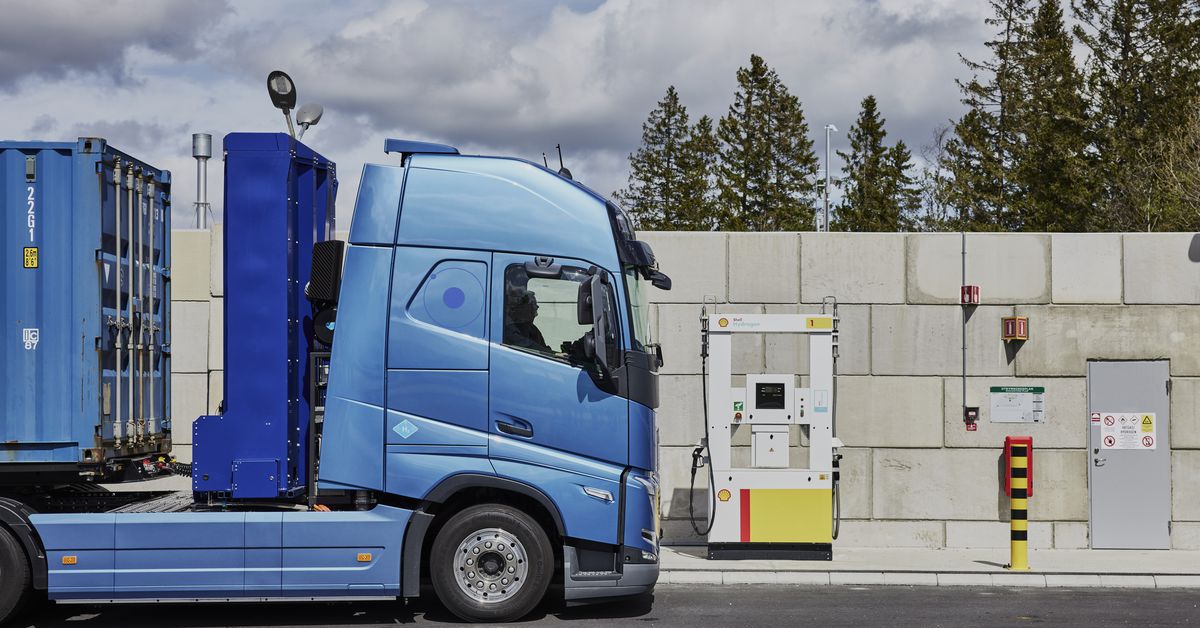Volvo’s commercial truck group is testing out hydrogen fuel cell semis
Volvo’s commercial trucking division is testing hydrogen fuel cell semi trucks in the hopes of getting ahead of the maturing technology. With fuel cells built by CellCentric, a joint venture between Volvo and Daimler Truck Automotive Group, Volvo claims its trucks are capable of 1,000 kilometers of range (about 621 miles) and can be refueled in under 15 minutes.
Volvo Trucks has been “developing this technology for some years now,” said company president Roger Alm in a statement this week. Hydrogen fuel cells will be suitable for long-distance hauling and could work in countries with limited battery charging infrastructure, Alm said. The company started building battery-electric trucks in 2018, but they still aren’t widely in service in the US. Now with hydrogen fuel cell trucks, Alm says he expects growth in the supply of clean hydrogen in the next couple of years.
:no_upscale()/cdn.vox-cdn.com/uploads/chorus_asset/file/23643116/T2022_78902.jpg)
Hydrogen fuel cell vehicles and battery electric vehicles (BEV) are similar in that they are both propelled by an electric motor, but the former generates its electricity from the compressed hydrogen it carries, while the latter stores electricity generated from the area power grid. Both technologies are emissions-free “at the tailpipe,” meaning that they do not emit any carbon in motion. But there can be significant emissions released depending on the method of transporting hydrogen gas to stations, while BEVs are as clean as the power grid it relies on — which can vary from green sources like solar or dirty sources like coal.
A hurdle for hydrogen fuel cell vehicles continues to be the scarce availability of refueling stations. Currently, there are less than 60 stations operational in the US, and all of them are in California. And according to the California Fuel Cell Partnership website, the number of hydrogen fuel stations will increase to just over 100 locations by mid-2023.
The most viable use case for hydrogen fuel cell vehicles is commercial trucking. With Volvo’s new truck, the company joins automakers like Toyota, which spearhead the tech in commercial and passenger application, and also GM, which is working with Navistar on a 500-plus miles semi and is also using the tech to build mobile power stations.
For all the latest Technology News Click Here

